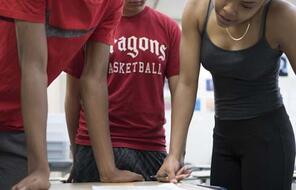
From Fitting In to Belonging Assessment Ideas
At a Glance
Language
English — USSubject
- English & Language Arts
Grade
7–8Duration
Two 50-min class periods- Culture & Identity
Overview
About This Assessment
We have provided two short summative assessment ideas for you to choose from:
- Option 1: A Hexagonal Thinking discussion and a written response.
- Option 2: A Circles of Action written response and a discussion.
Both assessments invite students to revisit their journal reflections, texts, and handouts in order to synthesize ideas about key concepts in the text set, such as the forces that shape belonging and how we can reduce the barriers to belonging for ourselves and others. These assessment ideas are starting places from which you can create a culminating experience that feels authentic and relevant for your context.
Preparing to Teach
A Note to Teachers
Before teaching this lesson, please review the following information to help guide your preparation process.
Lesson Plans
Activities
Materials and Downloads
Quick Downloads
Download the Files
Download allGet Files Via Google
From Fitting In to Belonging Assessment Ideas
Unlimited Access to Learning. More Added Every Month.
Facing History & Ourselves is designed for educators who want to help students explore identity, think critically, grow emotionally, act ethically, and participate in civic life. It’s hard work, so we’ve developed some go-to professional learning opportunities to help you along the way.
Exploring ELA Text Selection with Julia Torres
On-Demand

Working for Justice, Equity and Civic Agency in Our Schools: A Conversation with Clint Smith
On-Demand

Centering Student Voices to Build Community and Agency
On-Demand
















